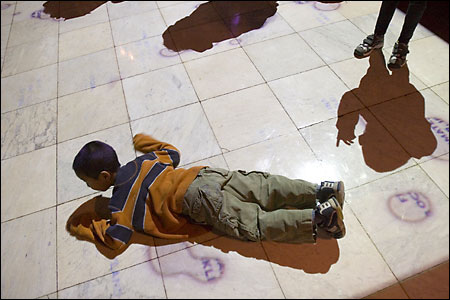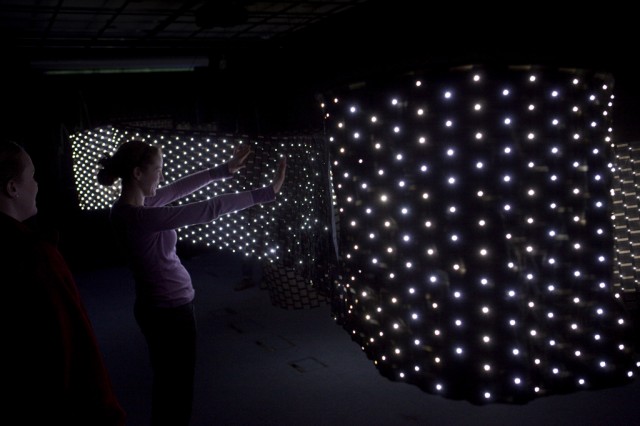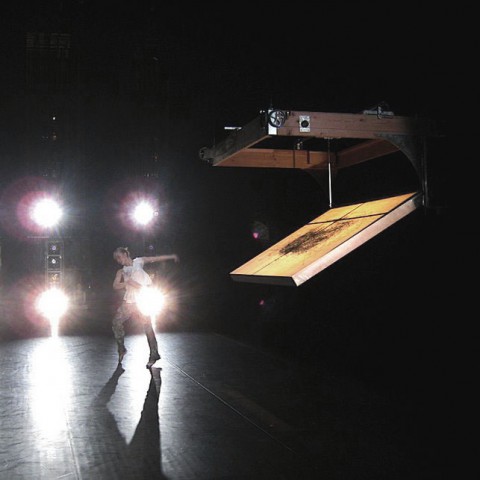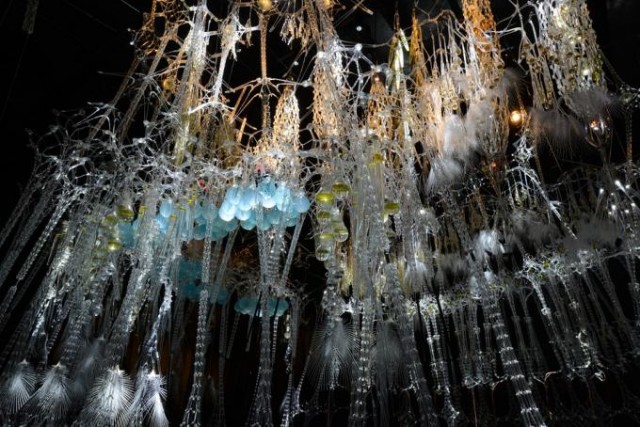One project that I admire – Deep Wounds
Deep Wounds
The Deep Wounds by Brian Knep is a projection that is installed at Harvard University’s Memorial Hall. When visitors walk across these projections it opens up to reveal the names of Harvard graduates and students who died in the civil war.
This project actually is actually based on biology and nerve impulse models and where it started from. The installation’s response pattern was governed by actual biological equations and Knep’s work was conceptualised on the idea of complex patterns and behaviours arising from simple rules which was based on biology.

The reason that this art was inspiring and also admiring was that I could identify with what the art was trying to say. The art itself portrays the unfinished healing that the war had brought and the losses that it caused. Whe there is an action taken by the person the wound is formed, just like how the war created by a person makes the wound. The healing process of the projection takes time and as Brian says that “You need to do some work to heal it.”. I think his idea of the relationship between “wounding” and “healing” is not just history but also something happening right now; it is not restricted to some people but everyone has there wounds and healing. The viewer’s interaction re-opens the wound and the past is finally reconciled.
http://www.blep.com/works/deep-wounds/
One project that surprised me – The E-Static Shadows
The E-Static Show
The E-Static Shadows is a project by Zane Berzina. This project explores electrostatic meaning it works with the slow moving electric charges, which happens to be everywhere that we live in today. The light installed on the textile interact with the electronic charges that are produced when there is a person interacting with it. What surprised me about the project was the interaction between the light and human. This project actually tried to portray the relationship between space and people, creating electronic charges that we can’t see to something that we can sensor and interact with.

This project had opened a new possibilities for the artists and scientists to search and explore the potentials of the hidden electrostatic forces in modern life. I see the potential of this in making the modern lie easier with sensors that can react to human by electrostatic forces and maybe using this to create new energy forms that we might use in the future. As I looked upon the internet, I found that electrostatic was something that as far as it goes, Greeks was studying. I think that this long interest had made this artwork possible. Also this was not a single person project but a mixture of engineers, architects and designers. I think this project shows that the art nowadays are not really a single criteria but rather a mixture of everything and that artists need to know other fields too.
http://www.zaneberzina.com/e-staticshadowsproject.htm
One project that could have been better – Device for Drawing the Movements of a Ballerina

I do admire Alan Storey for her various concepts of drawing machines throughout his career. However, his recent work of “Device for Drawing the Movements of a Ballerina” had disappointed me. In his work, she traces dancing ballerina over a series of performance through computer mapping. The final work is a paper with a series of lines which portrays the ballerina’s movements. The concept of this art was very interesting from the fact that one art was transformed into another art, not directly through a person but rather an art form. So dancing, which is art, was transformed into a drawing, and art, by a machine that was created by the artist, which is also an art.
However, it disappointed me on the fact that there is rather not a lot of interaction between the viewer and the art when it comes to the final product. Rather, if there was no context the audience could see it as “just a bunch of lines and dots” rather than the art itself despite the time and effort that was put into it. His devices are wonderful since there is unlimited amount of possible outcomes because it is based on live actions. I think that this live action and the drawing can be related in somewhat different way rather than showing in a gallery to pull the full potential out.
http://alanstorey.net/drawing-machines.html




